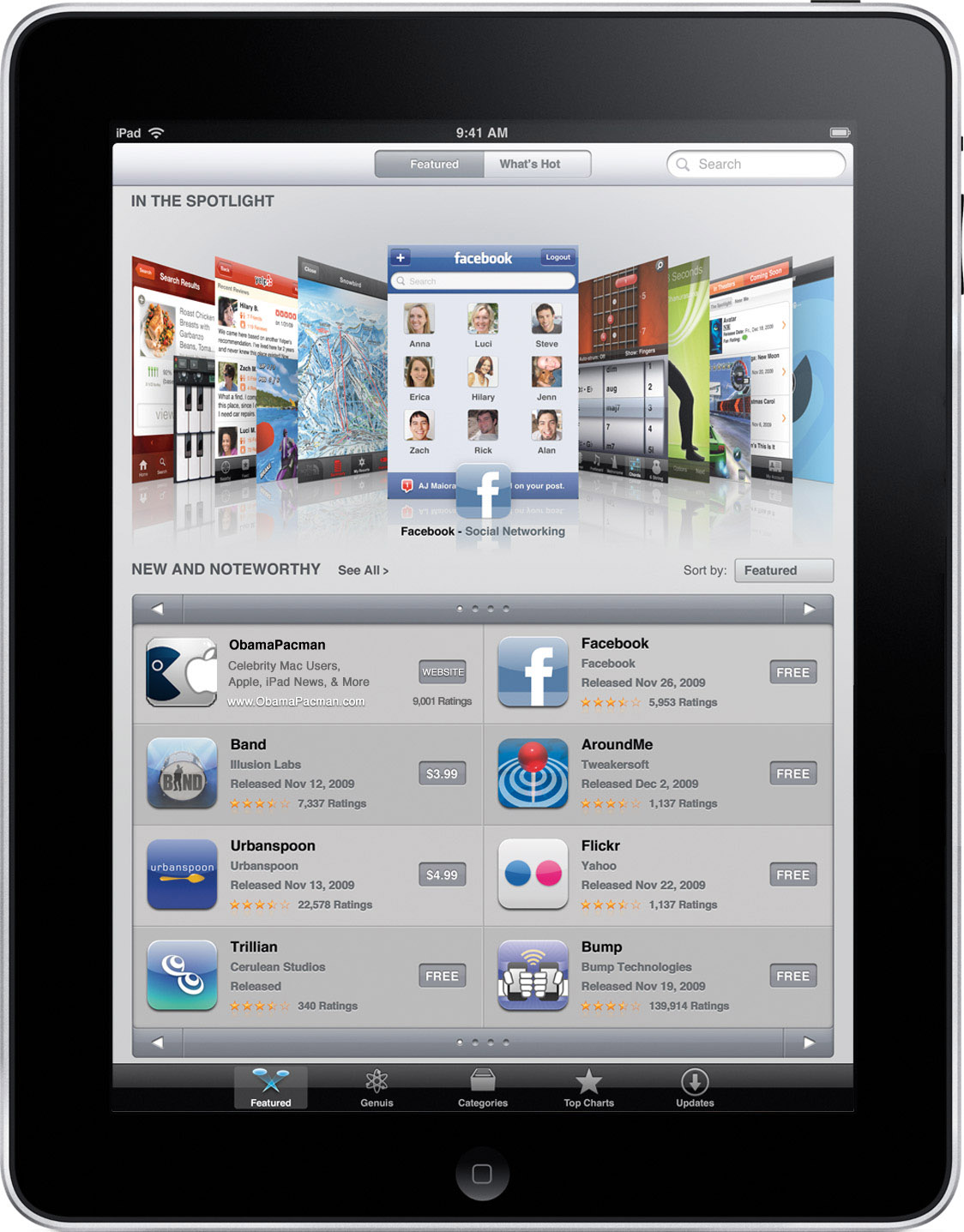9. Get a few good apps. There are tons of options, obviously, and tons of use cases, but I like the Kindle App for e-reading, Flipboard for news, YouTube/Netflix/Hulu Plus, Pages for writing, Google Maps as a must-have Apple Maps replacement, Evernote for general note-taking, and Plants vs. Zombies, Ticket to Ride, and Angry Birds Space as must-have first-day games (read our must-have games list for more ideas). Even better, ask friends who use an iPad what they’re using.
3. Find your other free(ish) stuff. I bet you have plenty of grandfathered-in “free” content that’s ready to go on your iPad — free because you already paid for it elsewhere. First, go to your iTunes or App Store apps and browse under “purchased” (it’s usually hidden away under the “More” tab, or it’s under “Updates” in the App Store). It’s an ugly way to browse what you’ve already bought, but make sure you stock up on any iPhone apps you already own that are universal for iPad, and in iTunes download music, movies, and books you already have.
We use our PadGadget Apps Tracker to constantly monitor the App Store to find the biggest price changes on iPad apps. Our editorial team goes through the data, picks the best deals on the most interesting apps and then brings them to you on a regular basis. All app prices are checked at the time of posting but prices are subject to change without notice. When developers put their apps on sale it’s usually for a very limited time, often 24 hours or less, so be sure to check pricing on iTunes before making a purchase.
10. Get a good case. Or a bag. The iPad just comes with a Lightning cable for syncing and charging, nothing more. You need some sort of protection. Apple’s own Smart Cover is a clever multi-use accessory that protects the screen, but not the back. If you’re getting an Apple-made accessory, I prefer the new leather Smart Case, but it’s more expensive. If you’re a large-iPad owner, consider something that docks easily with a keyboard — check out some keyboard cases here. For the Mini, a booklike folio cover feels best. And don’t go overboard with specialty bags; something with separate pockets and padding and can still hold other stuff works best. Read my advice on that from a year ago, most of which still holds true now.
2. Get your free iWork and iLife apps. iPhone, iPod and iPad buyers now get a suite of Apple productivity and media-creation apps for free that used to collectively cost a fair amount of money. Definitely download these — in fact, when you’re setting up your iPad for the first time, you’re prompted to begin downloading all the free Apple-created software. All the apps are universal, so if you got them already by buying a new iPhone, you’ll be able to redownload the iPad versions for free via your Already Purchased apps on the App Store if you bought a used iPad. Pages, Numbers and Keynote are very good word processing, spreadsheet and presentation-creation apps, and they even sync via iCloud and to Macs that own these apps in OSX Mavericks. There’s no reason not to use them. iPhoto, iMovie and GarageBand are similarly good photo editing, video editing and music creation tools. Other apps match the features of iPhoto, but few solutions out there can beat iMovie or GarageBand. All of these have been graphically redesigned for iOS 7.
6. Tweak your notifications and privacy. Every app likes to scream out all its information all the time via banners and other annoying pop-ups on your home screen. You can override this by going to Notifications and unchecking all the various notifications options. There are many, but I’d suggest removing them all for apps you don’t consider essential. Make sure banners are off and the notifications don’t appear in the lock screen, and you should find yourself less pestered. Similarly, make sure you examine your Privacy settings, and deactivate (or activate) any location or information sharing you’d like on certain apps. You may not want your photos to be geotagged on social networks.
